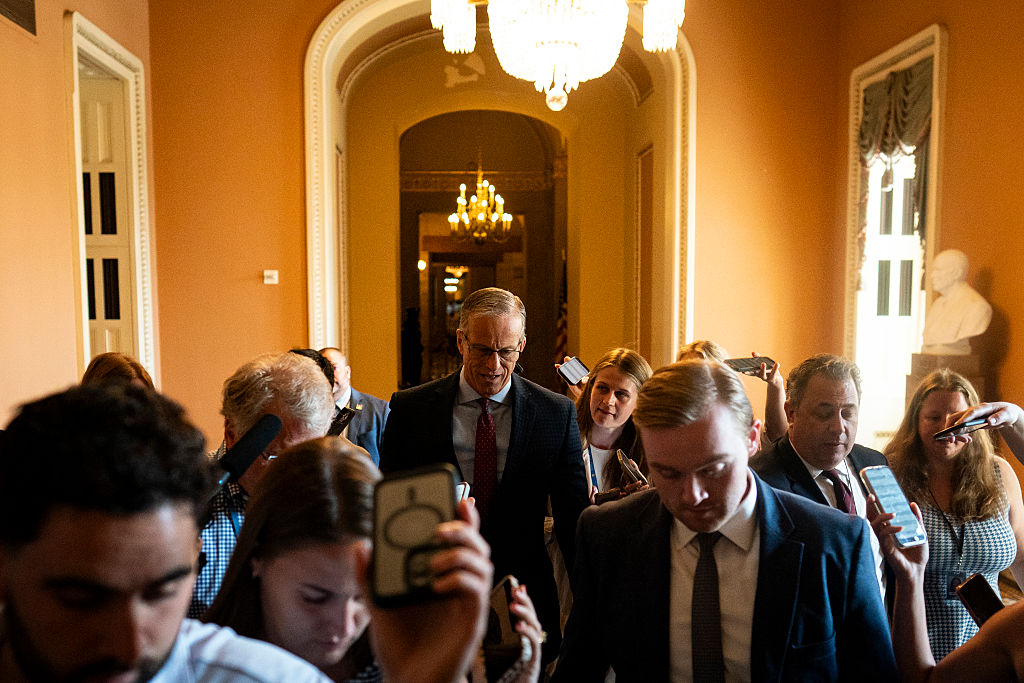- Wednesday, July 16, 2025
Senate Republicans have passed Donald Trump’s sweeping tax and spending bill after intense debate, but deep divisions in the House over Medicaid cuts and deficit concerns threaten its final approval.

By: Vibhuti Pathak
Senate Republicans have narrowly passed president Donald Trump’s ambitious tax and spending bill, moving it one step closer to becoming law after weeks of intense negotiations and partisan debate. The legislation, which combines permanent tax cuts, increased defense and border security funding, and deep reductions to social safety net programs, now heads to the House of Representatives for a decisive vote.
What’s in the “Big, Beautiful Bill”?
The bill, informally dubbed the “One Big Beautiful Bill,” is a sprawling 887-page package that aims to cement Trump’s hallmark 2017 tax cuts, which are set to expire at the end of this year, and introduce additional tax breaks. Key provisions include:
Senate Passage: A Divided Chamber
The Senate approved the bill by a razor-thin 51-50 margin, with Vice President JD Vance casting the tie-breaking vote after three Republicans joined all Democrats in opposition. The vote capped nearly 48 hours of debate and amendment votes, reflecting deep divisions within the GOP. Some moderate Republicans, including Susan Collins, Thom Tillis, and Rand Paul, opposed the bill over concerns about cuts to Medicaid and the projected increase to the federal deficit.
Fiscal Impact and Criticism
The nonpartisan Congressional Budget Office estimates the legislation will add $3.3 trillion to the national debt over the next decade, with critics warning the true figure could be even higher if temporary provisions are made permanent. Fiscal watchdogs and Democrats have slammed the bill as fiscally irresponsible, arguing that it prioritizes tax breaks for the wealthy and corporations at the expense of working families, healthcare access, and deficit reduction.
Senate Democratic leader Chuck Schumer called the bill a “big, ugly betrayal,” warning of job losses, hospital closures, and higher costs for ordinary Americans. Even some Republicans expressed regret over the rushed process and the bill’s potential impact on vulnerable populations.
Next Steps: Uncertain Path in the House
The bill now faces a crucial test in the House, where Republican leaders are pushing for a final vote as early as Wednesday to meet Trump’s July 4 deadline. However, the House GOP’s narrow majority and deep factional splits mean the outcome is far from certain. Moderates are uneasy about the safety-net cuts, while fiscal conservatives argue the bill does not go far enough in reducing spending.
Some House Republicans, particularly those from competitive districts, have voiced strong objections to the Medicaid cuts and the rushed timeline, while others are wary of being asked to approve a Senate-amended bill with little time for review. The Democratic caucus is uniformly opposed, and party leaders have signaled they will use every procedural tool available to try to block the measure.
Political Stakes and Outlook
For Trump and Republican leaders, the bill represents a signature legislative achievement and a key campaign promise. But with the national debt set to rise and millions potentially losing access to vital programs, the political risks are high. The coming days will determine whether the GOP can unite behind the measure—or whether internal divisions and public backlash will force further changes before it reaches the president’s desk